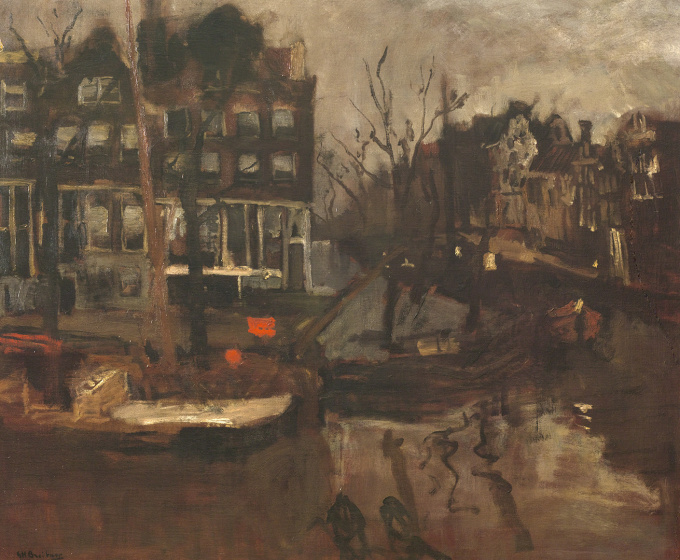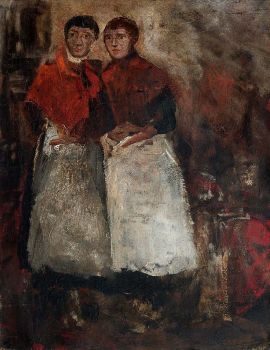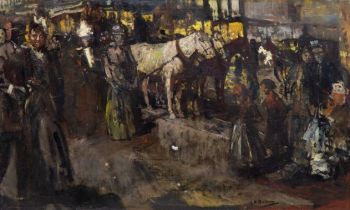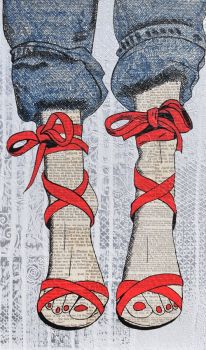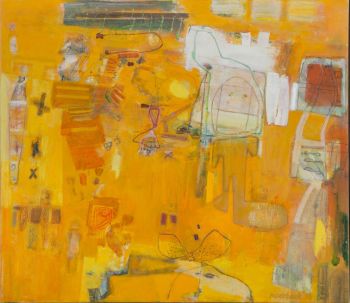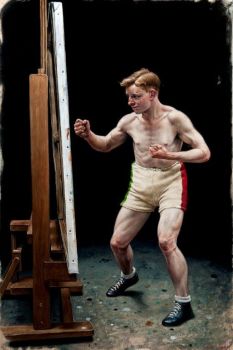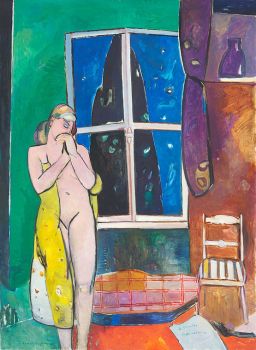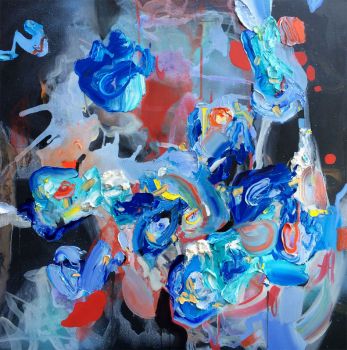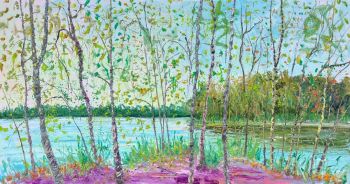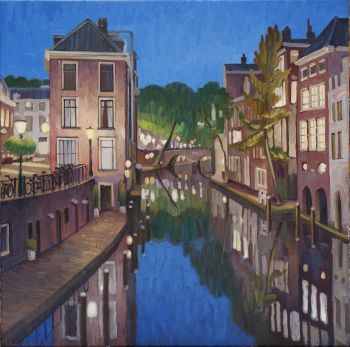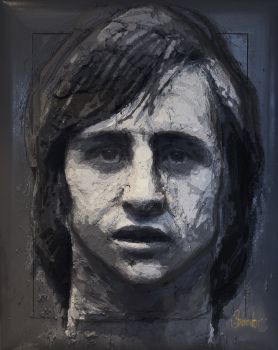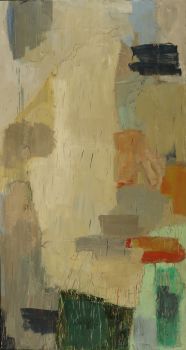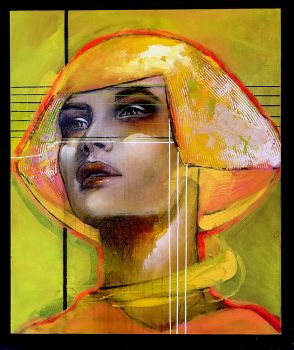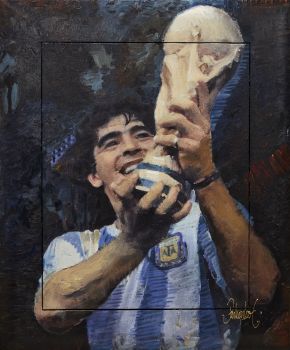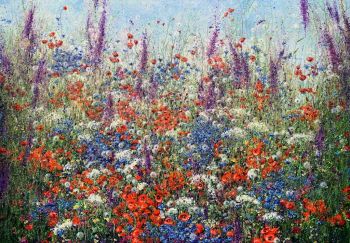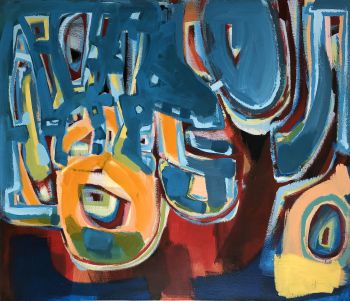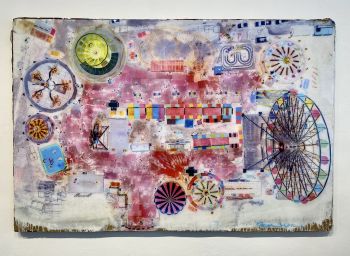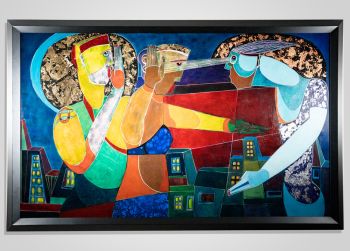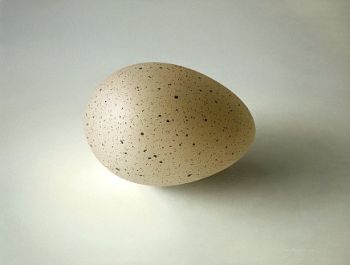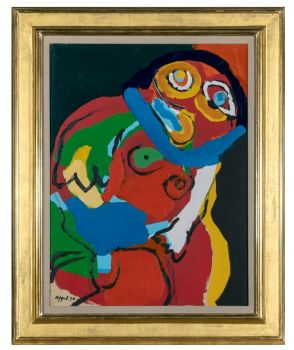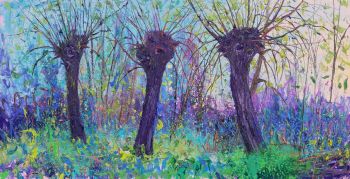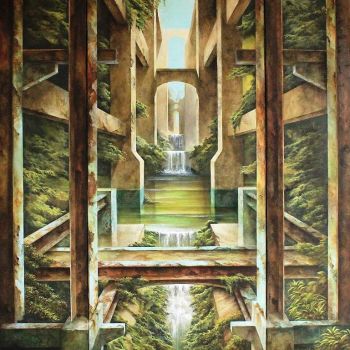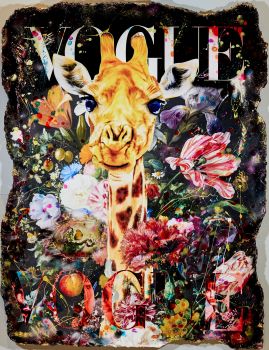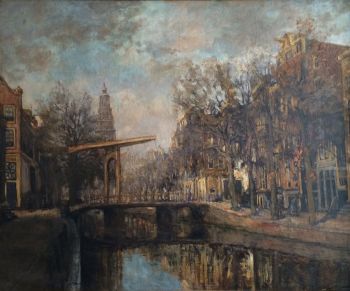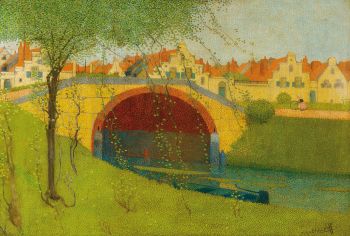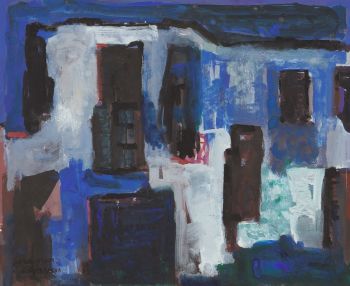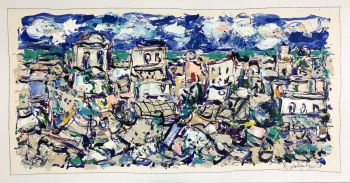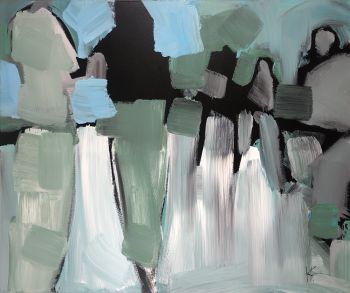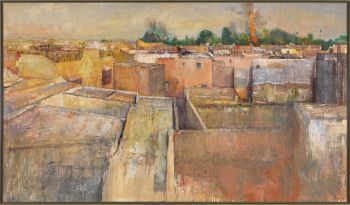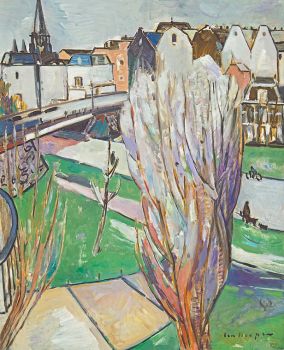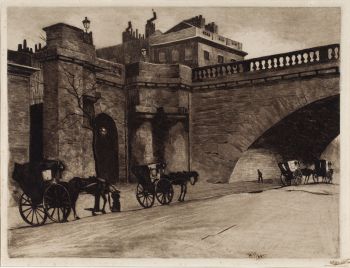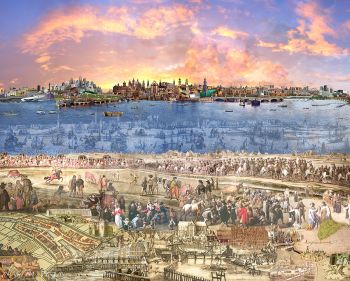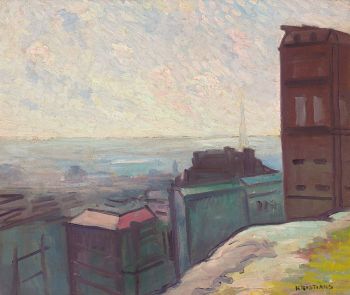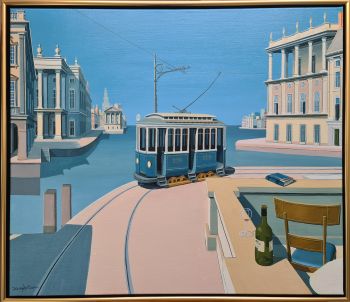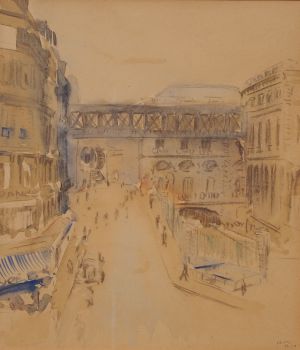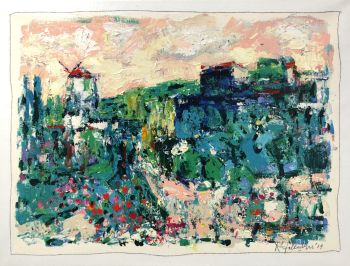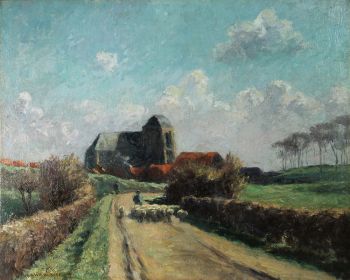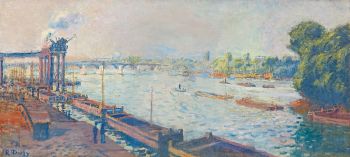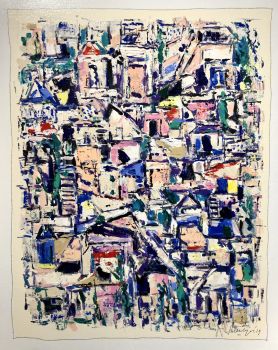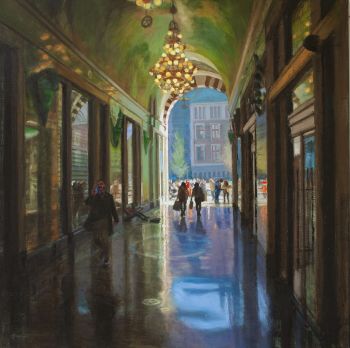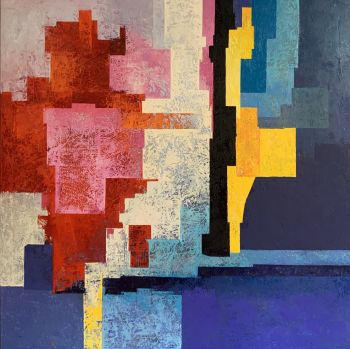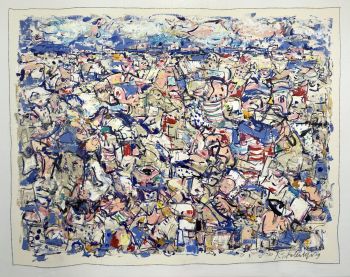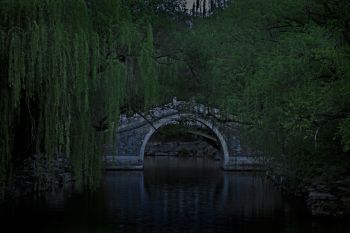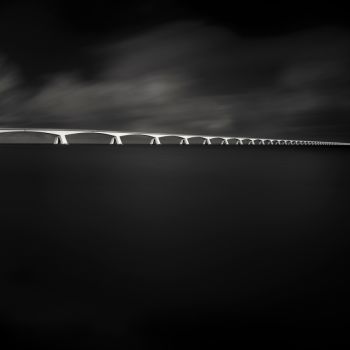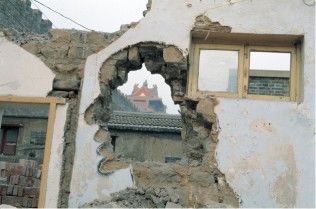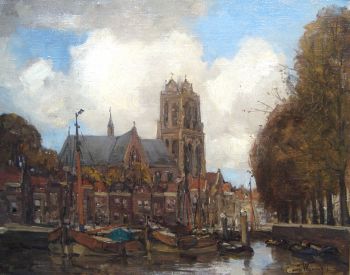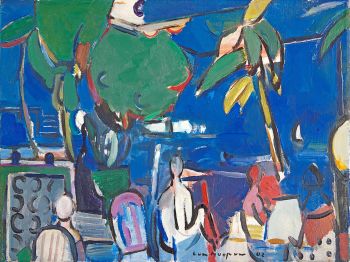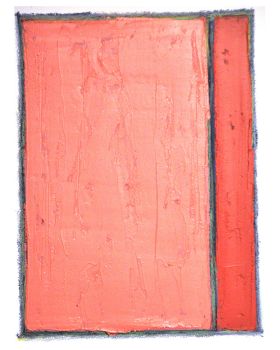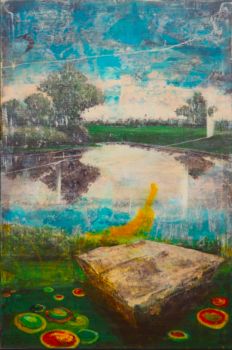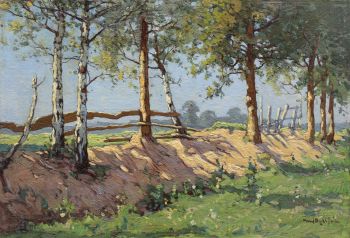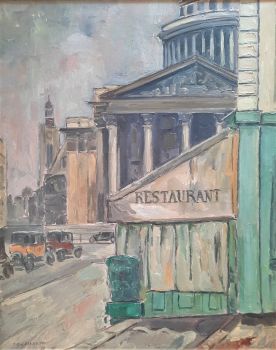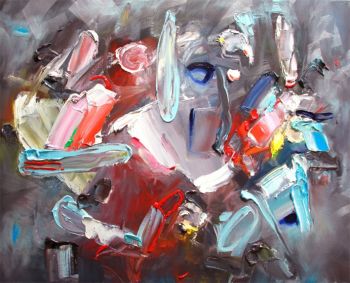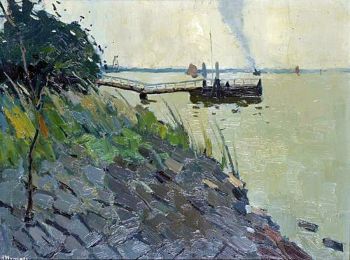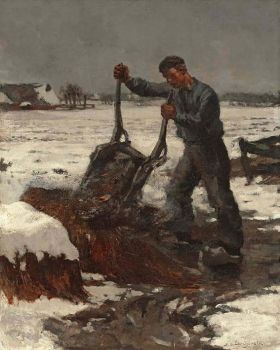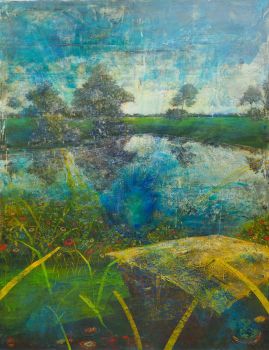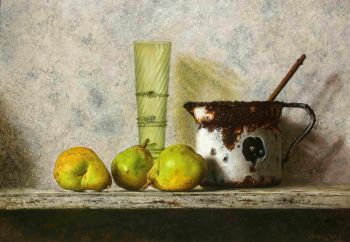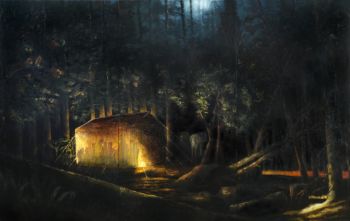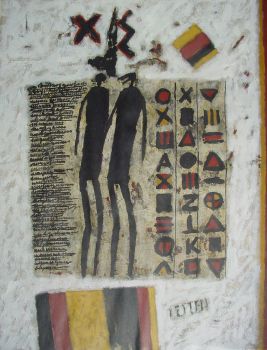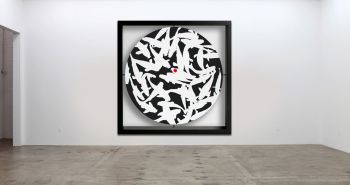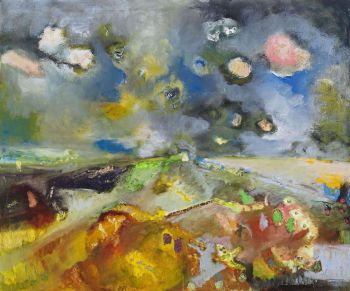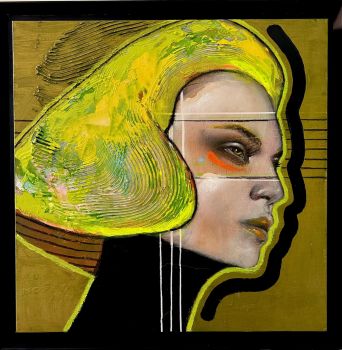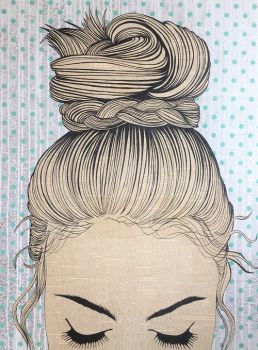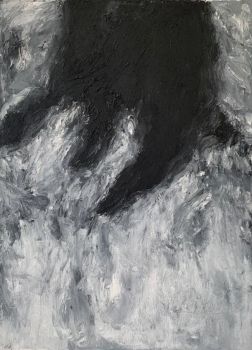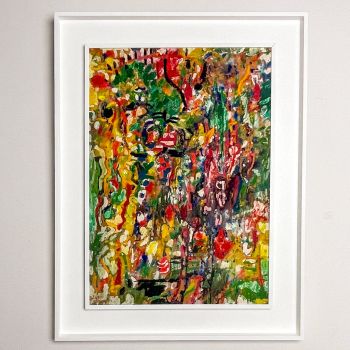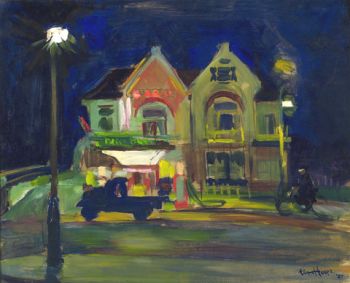The Brouwersgracht near the Korte Prinsengracht, Amsterdam 1900
George Hendrik Breitner
ToilePeinture à l'huilePeindre
85 ⨯ 101 cm
ConditionExcellent
Actuellement indisponible via Gallerease
- Sur l'oeuvre d'artOil on canvas
85 x 101 cm.
Signed: lower left ‘G.H. Breitner’
Provenance:Private collection, The Netherlands; Kunsthandel Kupperman, Amsterdam; vlg. Sotheby’s Amsterdam 24-4-2007, lotno. 254; Amsterdams Historisch Museum, on loan, inv.no. SB 6324.
The Brouwersgracht, Korte Prinsengracht and Haarlemmerstraat, all within a circle of not more than 100 metres, were like an open air studio to Breitner. He painted many views of the busy bridges and canals, populated by horse-drawn carts, pedestrians and workmen. In the work of Breitner, who very much sided with the ordinary working class, the human figure played an essential role. He painted the figures at close range, making the beholder feel part of the scene, as if we are standing in the street, amidst the passers-by. Paintings like the present lot show a different aspect of Amsterdam and focus on the calm serenity and timeless beauty of the canals with their gabled houses, seen from a bird's eye view. In this loosely painted view the human figure plays no role. Breitner executed the present lot around 1900. A larger version of the same subject, depicted in winter time, is in the collection of the Rijksmuseum, Amsterdam (on loan to the Historisch Museum in Amsterdam). - Sur l'artiste
George Hendrik Breitner (1857-1923) est né à Rotterdam.
En 1876, il s'inscrit à l'académie de La Haye. Plus tard, il a travaillé au studio de Willem Maris.
Dans cette première période, il a été particulièrement influencé par les peintres de l'école de La Haye. Breitner a préféré les modèles de la classe ouvrière: les ouvriers, les filles de service et les gens des quartiers populaires. Il se voyait comme «le peintre du peuple», le peintre du peuple.
En 1886, il s'installe à Amsterdam, où il enregistre la vie de la ville sous forme de croquis, de peintures et de photos. Parfois, il a fait plusieurs photos du même sujet, sous des angles différents ou dans des conditions météorologiques différentes.
Les photos peuvent servir d'exemple pour une peinture, comme pour ses portraits de filles en kimonos, ou comme matériel de référence général. Breitner a souvent collaboré avec Isaac Israels; les deux peintres sont appelés impressionnistes d'Amsterdam. Les critiques conservateurs ont qualifié le style de Breitner d '«inachevé».
Artwork details
Related artworks
- 1 - 3 / 3
- 1 - 4 / 24
Willem Witsen
Waiting carriages in front of Waterloo Bridge1850 - 1900
Prix sur demandeKunsthandel Pygmalion
Bob Buys
Paris, Gare de L'Est, Passerelle de la Rue d'Alsace1940 - 1950
Prix sur demandeAdelwein Kunst
1 - 4 / 24Raoul Hynckes
Riverview with scaffolding (near Kinderdijk, the Netherlands)1913 - 1924
Prix sur demandeKunsthandel Pygmalion
1 - 4 / 24

